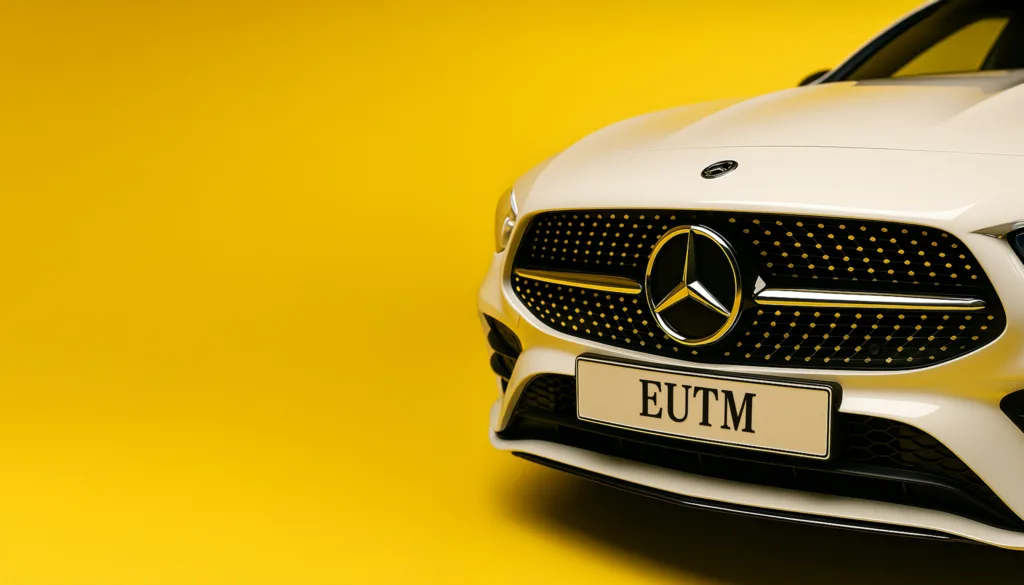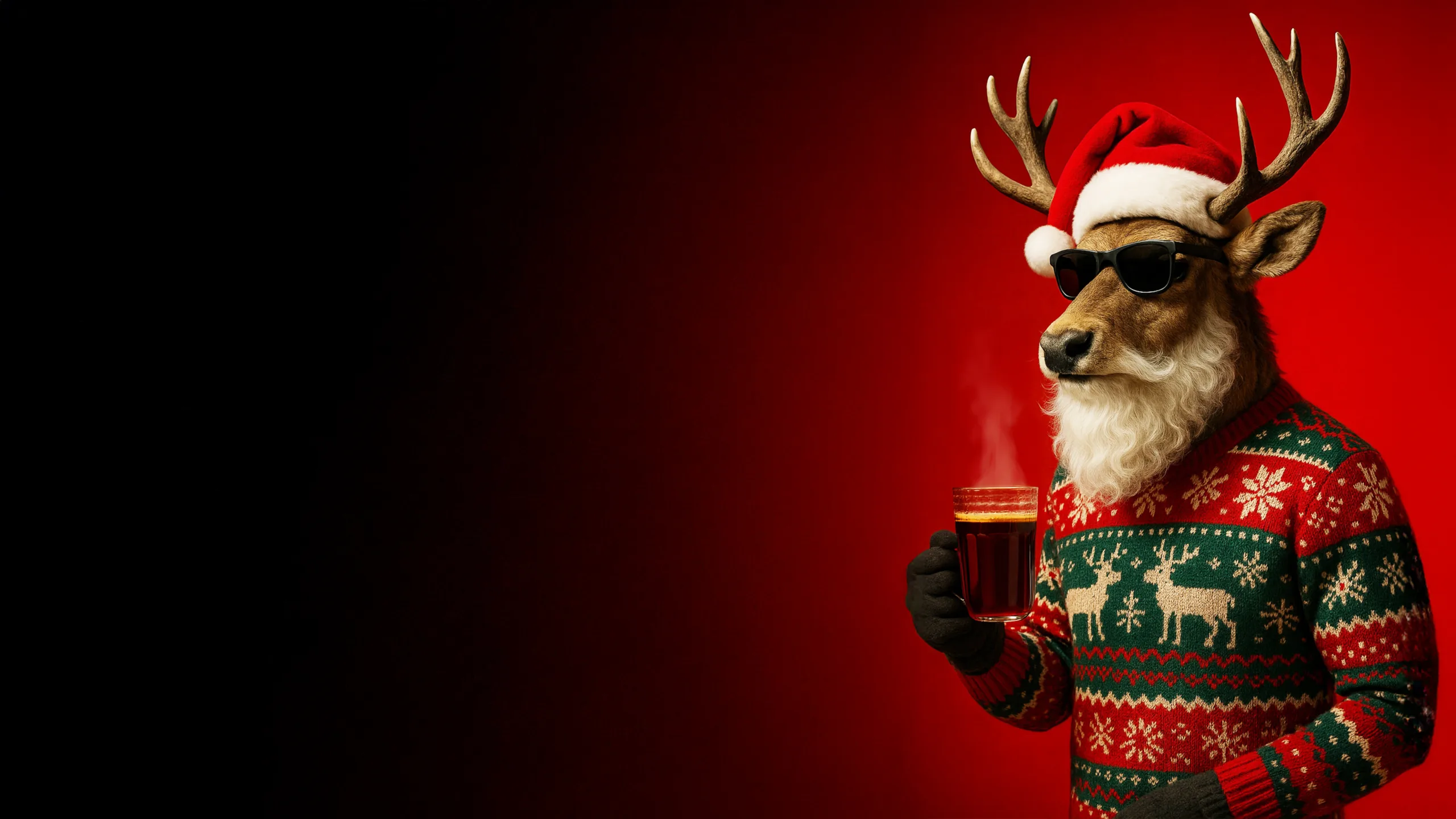
Mercedes
Radiator grille
As a trademark.
Mercedes
Radiator grille
As a trademark.
from
Is a radiator grille design sufficient as an indication of origin – or is it just a decorative accessory? What companies can learn from a recent EUIPO decision regarding product design and trademark protection.
What is it all about?
Ein Fahrzeuggrill ist Design, Technik – und vielleicht Marke. Die Mercedes-Benz Group AG wollte eine Bildmarke eintragen lassen, die die Front eines Kühlergrills zeigt, unter anderem für Fahrzeug-Kühlergrills in Klasse 12.

Die EUIPO-Prüferin hielt das Zeichen für nicht unterscheidungskräftig: zu nah an der Ware, zu gewöhnlich. Mercedes-Benz legte hiergegen Beschwerde ein.
Background: Goods, shape and trademark
Shape and product representations traditionally have a difficult time: the relevant public does not automatically infer the commercial origin from the appearance of a part. Protection is only granted if the representation “deviates significantly from the standard or industry practice” – but a minimum level is sufficient.
The decision of the Board of Appeal
The Board of Appeal of the EUIPO decided on 07.04.2025 – Ref. R 2316/2024-1 the partial rejection for Class 12 goods overturned the examiner’s decision. The figurative sign applied for had sufficient distinctive character. The sign did not show just any grid, but a concrete combination – a grid-like structure, a circular element in the middle, inserted into a central bar with outwardly tapering ends. This arrangement is memorable and enables differentiation of origin.
That combination produces a visual effect which is likely to be memorized by the intended consumer and to enable him to distinguish the applicant’s grilles from those of other manufacturers.
It is noteworthy that the Board of Appeal is thus following a line that is already laid down in EU case law: designs that show a product or parts thereof can also be capable of being a trade mark if they have sufficient originality as a whole. A minimum degree of distinctiveness is sufficient – the sign does not have to be revolutionarily new, but it does have to appear independent. The overall impression is decisive, not the details. The Board of Appeal therefore rejected the examiner’s objection that a “star pattern” or other micro-details were allegedly missing. These were not recognizable in the application image anyway and were therefore irrelevant. The only decisive factor is what the viewer actually perceives – and here that is a striking composition, not a mere technical form.
With this argumentation, the Board of Appeal distances itself from an overly restrictive view according to which product representations are generally difficult to register as trademarks. It remains true that consumers often do not understand the appearance of goods as an indication of origin. However, the more strongly an element characterizes the appearance, the more likely the market is to recognize it as a symbol of the manufacturer. This is particularly true in the automotive sector, because certain front designs act as a brand signature for decades. A radiator grille can therefore be more than just an air intake – it can become the iconic distinguishing feature of a trademark.
What is new about the decision is above all the emphasis on the interplay of the elements. The Board of Appeal emphasizes that it is not a single feature that matters, but the “overall visual composition”. The combination of grid structure, central circle and characteristically shaped central bar creates a visual pattern that stands out from the market norm. The sign thus achieves the required minimum degree of distinctiveness. The proximity to the product – in this case the image of a radiator grille for precisely this product – does not contradict this. On the contrary: it can strengthen the function of origin, especially in combination with a concise design.
Practical implications: what companies should do now
In practice, this decision is an important pointer. Companies, especially in the automotive sector, should not only see design as a question of style, but also as a potential brand element. Anyone who recognizes at an early stage that a certain design language can act as a recognition mark should consider registering it as a figurative or 3D trademark. Although the hurdle of distinctiveness remains high, it is not insurmountable. The decisive factor is that the representation appears “different” at first glance – not spectacular, but distinctive enough to be recognized.
At the same time, the decision reminds us that the application image itself is the measure of all things. What is not clearly recognizable there cannot be used to establish distinctiveness. Applicants should therefore pay attention to a high-contrast, concise image that clearly emphasizes the central design idea. In practice, it may also make sense to apply for a design or several variants in order to broaden the protection strategy. A well-coordinated trademark and design strategy prevents gaps from arising if individual property rights fail or are attacked.
Furthermore, this case shows that trademark applicants should proactively document the design vocabulary of their industry. Particularly in the case of product proximity, it is worth carrying out your own small market analysis before filing the application in order to prove that the chosen design actually deviates from the usual. This not only facilitates the examination procedure, but also strengthens the defense in the event of opposition or invalidity.
Conclusion
A radiator grille can also be the face and voice of a trademark. The EUIPO Board of Appeal has now expressly confirmed this and thus paved the way for the recognition of design-defining vehicle parts under trade mark law. Companies that take their corporate design seriously should not miss out on this opportunity. Design is not only beautiful, but sometimes also protectable – and in this case even trademark-forming.
We are happy to
advise you about
Trademark law!







